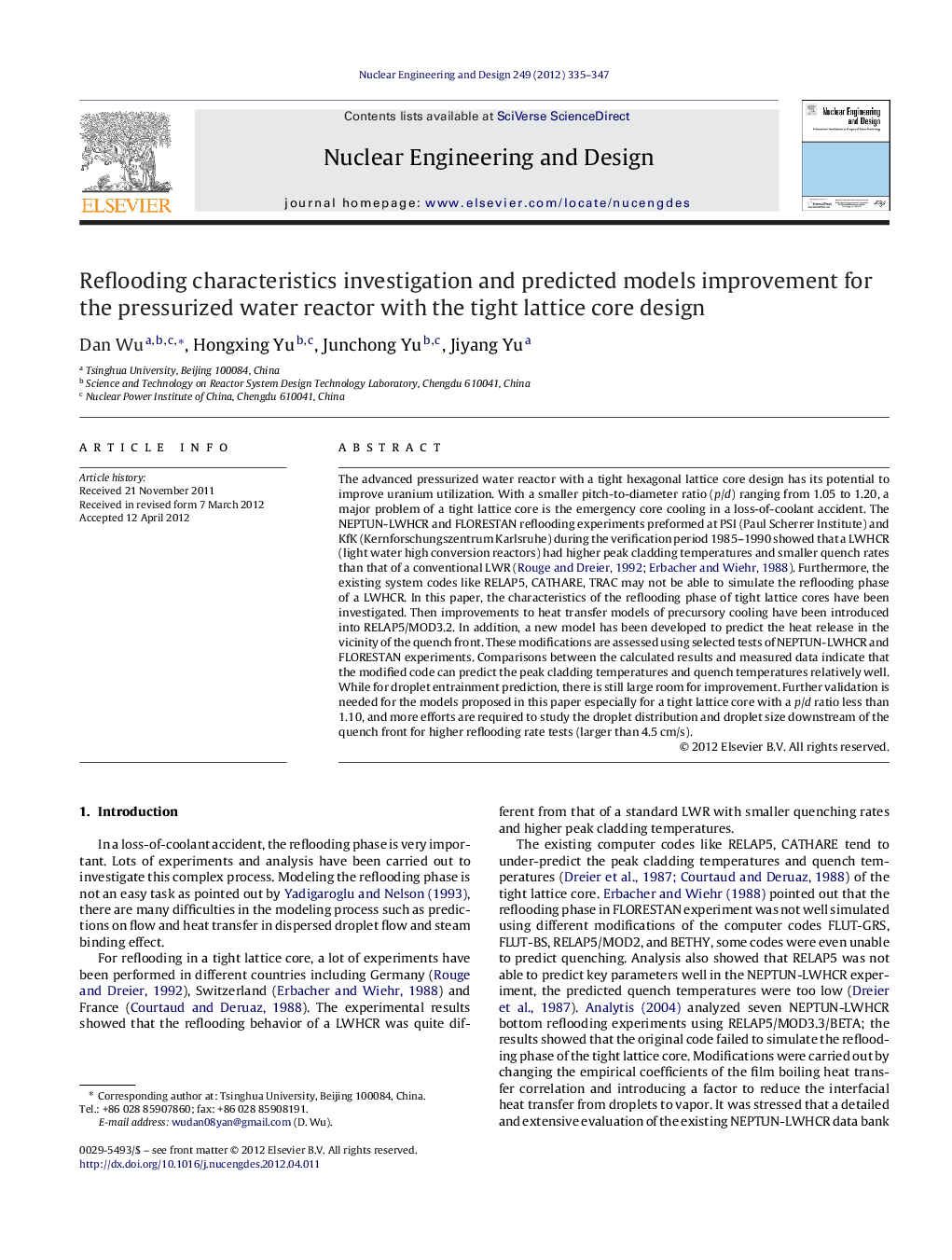| کد مقاله | کد نشریه | سال انتشار | مقاله انگلیسی | نسخه تمام متن |
|---|---|---|---|---|
| 297194 | 511750 | 2012 | 13 صفحه PDF | دانلود رایگان |

The advanced pressurized water reactor with a tight hexagonal lattice core design has its potential to improve uranium utilization. With a smaller pitch-to-diameter ratio (p/d) ranging from 1.05 to 1.20, a major problem of a tight lattice core is the emergency core cooling in a loss-of-coolant accident. The NEPTUN-LWHCR and FLORESTAN reflooding experiments preformed at PSI (Paul Scherrer Institute) and KfK (Kernforschungszentrum Karlsruhe) during the verification period 1985–1990 showed that a LWHCR (light water high conversion reactors) had higher peak cladding temperatures and smaller quench rates than that of a conventional LWR ( Rouge and Dreier, 1992 and Erbacher and Wiehr, 1988). Furthermore, the existing system codes like RELAP5, CATHARE, TRAC may not be able to simulate the reflooding phase of a LWHCR. In this paper, the characteristics of the reflooding phase of tight lattice cores have been investigated. Then improvements to heat transfer models of precursory cooling have been introduced into RELAP5/MOD3.2. In addition, a new model has been developed to predict the heat release in the vicinity of the quench front. These modifications are assessed using selected tests of NEPTUN-LWHCR and FLORESTAN experiments. Comparisons between the calculated results and measured data indicate that the modified code can predict the peak cladding temperatures and quench temperatures relatively well. While for droplet entrainment prediction, there is still large room for improvement. Further validation is needed for the models proposed in this paper especially for a tight lattice core with a p/d ratio less than 1.10, and more efforts are required to study the droplet distribution and droplet size downstream of the quench front for higher reflooding rate tests (larger than 4.5 cm/s).
► The precursory cooling in the reflooding phase of tight lattice is poor.
► Laminar heat transfer model for precursory cooling is proposed.
► Liquid film evaporation model is developed for heat transfer near the quench front.
► The accuracy of calculation results is improved significantly.
Journal: Nuclear Engineering and Design - Volume 249, August 2012, Pages 335–347